Sleeping Bear Dunes
Sleeping Bear Dunes National Lakeshore, situated along the northwest coast of Michigan's Lower Peninsula, is a haven of natural beauty, dunes, and pristine landscapes that captivate the hearts of visitors. Covering a vast expanse of over 71,000 acres, this national lakeshore is renowned for its towering sand dunes, crystal-clear lakes, lush forests, and diverse ecosystems. Let's embark on an in-depth exploration of the enchanting Sleeping Bear Dunes National Lakeshore, examining its geological wonders, outdoor activities, cultural significance, and the immersive experience it provides for those who venture into its embrace.
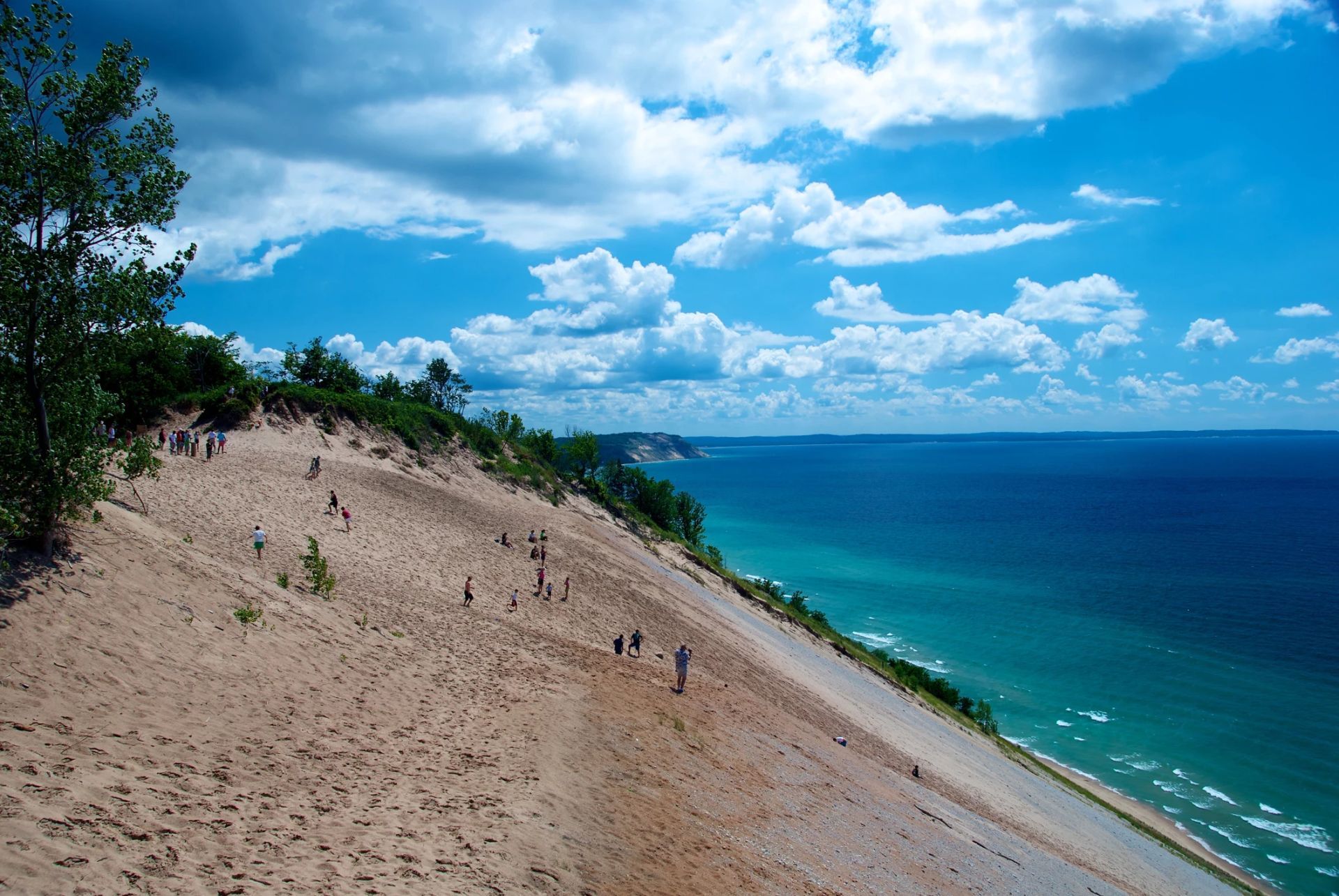
Dunes and Overlooks:
The defining feature of Sleeping Bear Dunes National Lakeshore is, undoubtedly, its awe-inspiring sand dunes that rise dramatically along the Lake Michigan shoreline. The dunes, shaped by glacial activity thousands of years ago, create a surreal landscape that is both mesmerizing and challenging to traverse. The most iconic dune within the park is the Dune Climb, a popular spot where visitors can ascend the sandy slopes for breathtaking panoramic views of Glen Lake and the surrounding area.
Numerous overlooks dot the park, providing stunning vantage points for admiring the expansive dunes, crystal-clear waters, and the distant Manitou Islands. The Pierce Stocking Scenic Drive, a scenic route through the park, offers access to several of these overlooks, including the famous Empire Bluff Trail, where hikers are rewarded with sweeping vistas of the dunes meeting Lake Michigan.

Glacial History:
The geological history of Sleeping Bear Dunes National Lakeshore is intricately tied to the last Ice Age. Glacial movements sculpted the landscape, forming the dunes, hills, and valleys that characterize the region today. As the glaciers retreated, they left behind a terrain marked by moraines, drumlins, and kettle lakes. The park's diverse ecosystems, ranging from hardwood forests to wetlands, showcase the ecological resilience of the area.
Outdoor Activities:
Hiking:
Sleeping Bear Dunes National Lakeshore offers an extensive network of hiking trails, catering to various skill levels and preferences. The Alligator Hill Trail, for example, takes hikers through wooded areas and offers breathtaking views of Lake Michigan. The Pyramid Point Trail leads to a stunning overlook, providing a unique perspective of the Manitou Islands and the dunes below.
For those seeking a more challenging trek, the Dunes Trail takes adventurers through the heart of the dune environment, presenting both a physical and visual adventure. Hiking enthusiasts can explore the park's trails year-round, each season offering a different, yet equally enchanting, experience.
Beaches and Water Activities:
The park's shoreline boasts pristine beaches along Lake Michigan and Glen Lake. Visitors can relax on the sandy shores, take a refreshing swim, or enjoy a leisurely picnic with a backdrop of dunes and crystal-clear waters. The water's clarity invites kayakers and paddleboarders to explore the coastline, immersing themselves in the serene beauty of the lakeshore.
For a unique adventure, the Sleeping Bear Point Trail leads to the historic Sleeping Bear Point Coast Guard Station. This trail provides an opportunity to learn about the region's maritime history and offers secluded beaches for those willing to make the journey.
Scenic Drives:
The Pierce Stocking Scenic Drive is a must for those who prefer a leisurely exploration by car. This 7.4-mile route winds through the park, featuring multiple stops with interpretive signage and breathtaking overlooks. From the towering Empire Bluff to the serenity of the Glen Lake Overlook, the scenic drive offers a curated journey through the park's diverse landscapes.
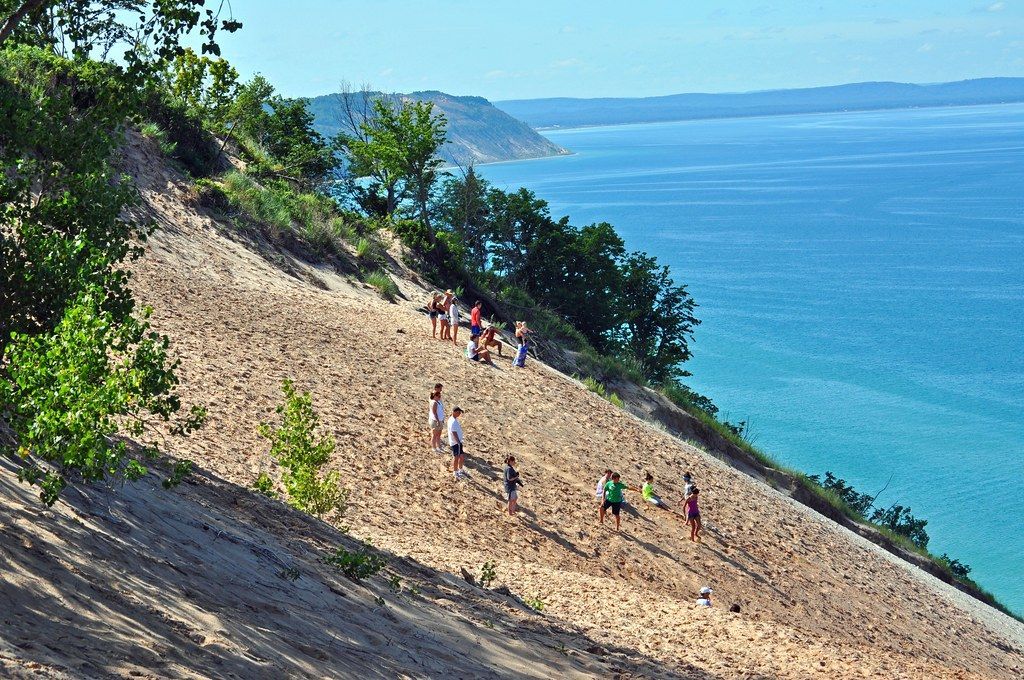
Legend of Sleeping Bear:
The park's name is derived from a Native American legend that adds a cultural layer to its natural wonders. According to the legend, a mother bear and her two cubs sought to swim across Lake Michigan to escape a forest fire. While the mother successfully reached the opposite shore, her cubs tired and perished in the waters. The two Manitou Islands, visible from the mainland, are said to represent the mother bear and her cubs. The park's name pays homage to this poignant legend, adding a cultural richness to the natural splendor.
Agricultural Heritage:
Beyond its geological and natural wonders, Sleeping Bear Dunes National Lakeshore has a history of agriculture that shaped the landscape. The park includes historic farms, such as the D.H. Day Farm and the Port Oneida Rural Historic District, where visitors can explore preserved barns, farmhouses, and outbuildings. These sites offer a glimpse into the challenges and triumphs of early settlers who carved out a living in the challenging terrain.
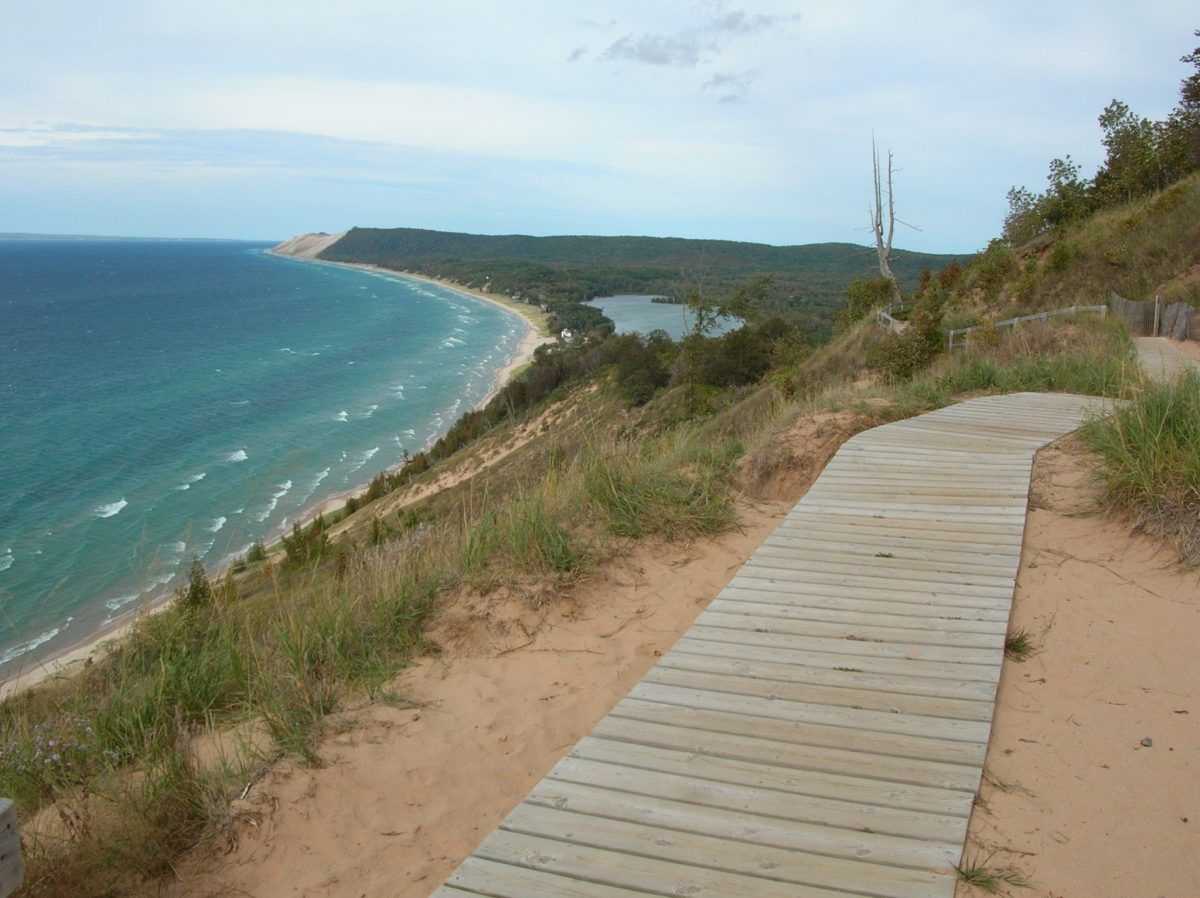
Preserving the Legacy:
The National Park Service, in collaboration with local organizations and communities, plays a crucial role in preserving the natural and cultural heritage of Sleeping Bear Dunes National Lakeshore. Conservation efforts aim to protect the delicate ecosystems, maintain trails, and promote sustainable practices to ensure the park's vitality for future generations.
Community Involvement:
Local communities surrounding the park actively engage in stewardship and conservation initiatives. The Sleeping Bear Heritage Trail, a non-motorized pathway, is an excellent example of community involvement. This trail, connecting the park's main attractions, encourages sustainable transportation while providing an accessible means for visitors to explore the beauty of the lakeshore.
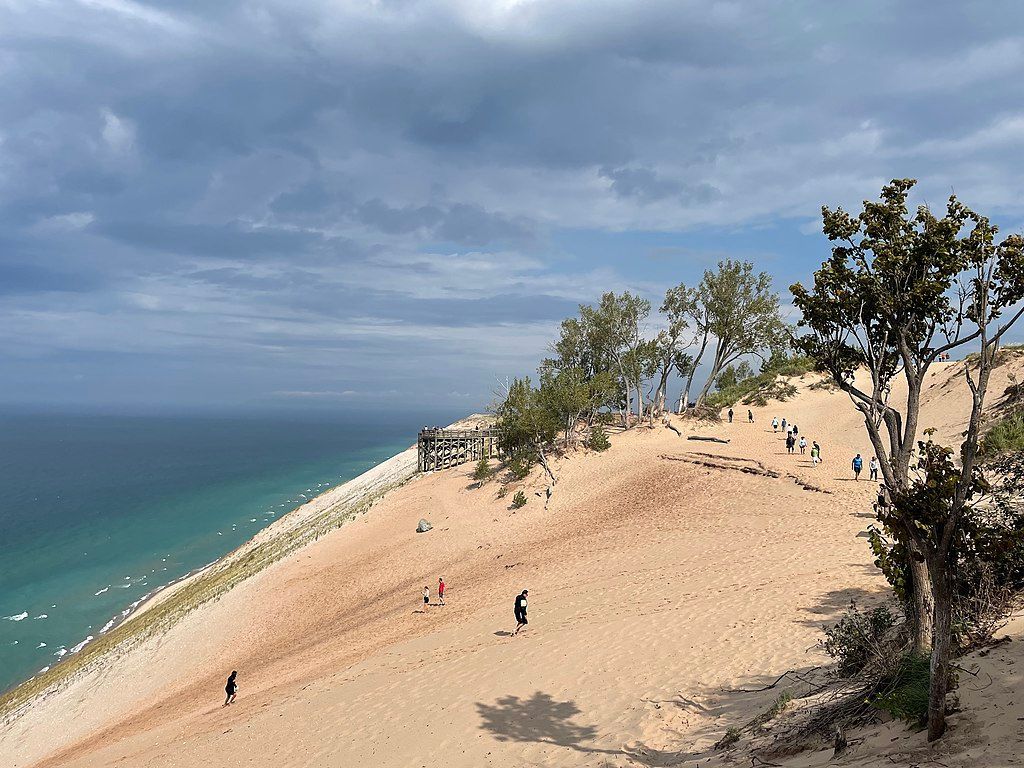
Visitor Centers:
The Philip A. Hart Visitor Center, located at the entrance of the park, serves as a gateway for visitors. Here, guests can obtain information about the park's features, pick up trail maps, and learn about ranger-led programs. The visitor center enhances the overall experience by providing insights into the natural and cultural wonders awaiting exploration.
Ranger-Led Programs:
The National Park Service offers ranger-led programs, including guided hikes, talks, and educational activities. These programs enhance visitors' understanding of the park's ecology, geology, and cultural history. Rangers, passionate about sharing their knowledge, provide an immersive experience that deepens the connection between guests and the natural world.
Campgrounds and Lodging:
For those seeking an overnight experience,
Sleeping Bear Dunes National Lakeshore offers campgrounds, providing a rustic camping experience amidst nature. The park also features nearby lodging options, ranging from quaint bed-and-breakfasts to modern hotels, ensuring that visitors can tailor their stay to their preferences.
In conclusion
Sleeping Bear Dunes National Lakeshore stands as one of Michigan’s most breathtaking and cherished natural wonders. With its towering sand dunes, pristine beaches, lush forests, and captivating views of Lake Michigan, the area offers visitors a diverse range of outdoor experiences. Whether it’s hiking up the majestic dunes, exploring the Sleeping Bear Heritage Trail, or simply relaxing along the crystal-clear shoreline, there’s something for everyone to enjoy.
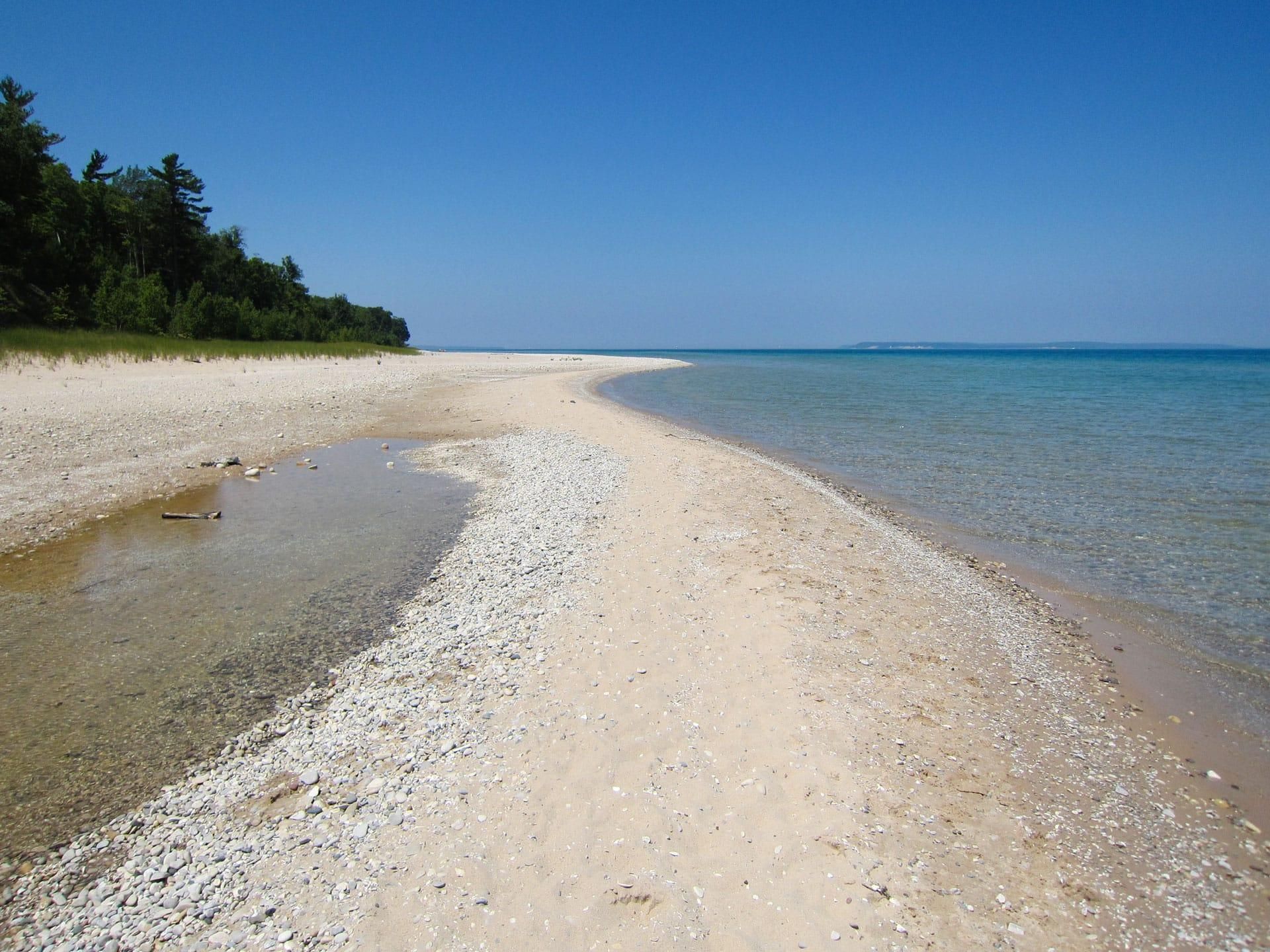
The natural beauty of Sleeping Bear Dunes is not just a visual spectacle but also a haven for wildlife, a sanctuary for flora, and a location steeped in both geological and cultural history. From the ancient glaciers that shaped its landscape to the legends of the Anishinaabe people that give it its name, the dunes hold a rich heritage that deepens its allure.
As a destination for families, nature lovers, and adventure seekers alike, Sleeping Bear Dunes offers an unforgettable connection with the natural world. Whether you’re visiting for a weekend or just passing through, the serene yet dramatic landscapes of this lakeshore will leave a lasting impression, beckoning you to return and experience its ever-changing beauty once again.

